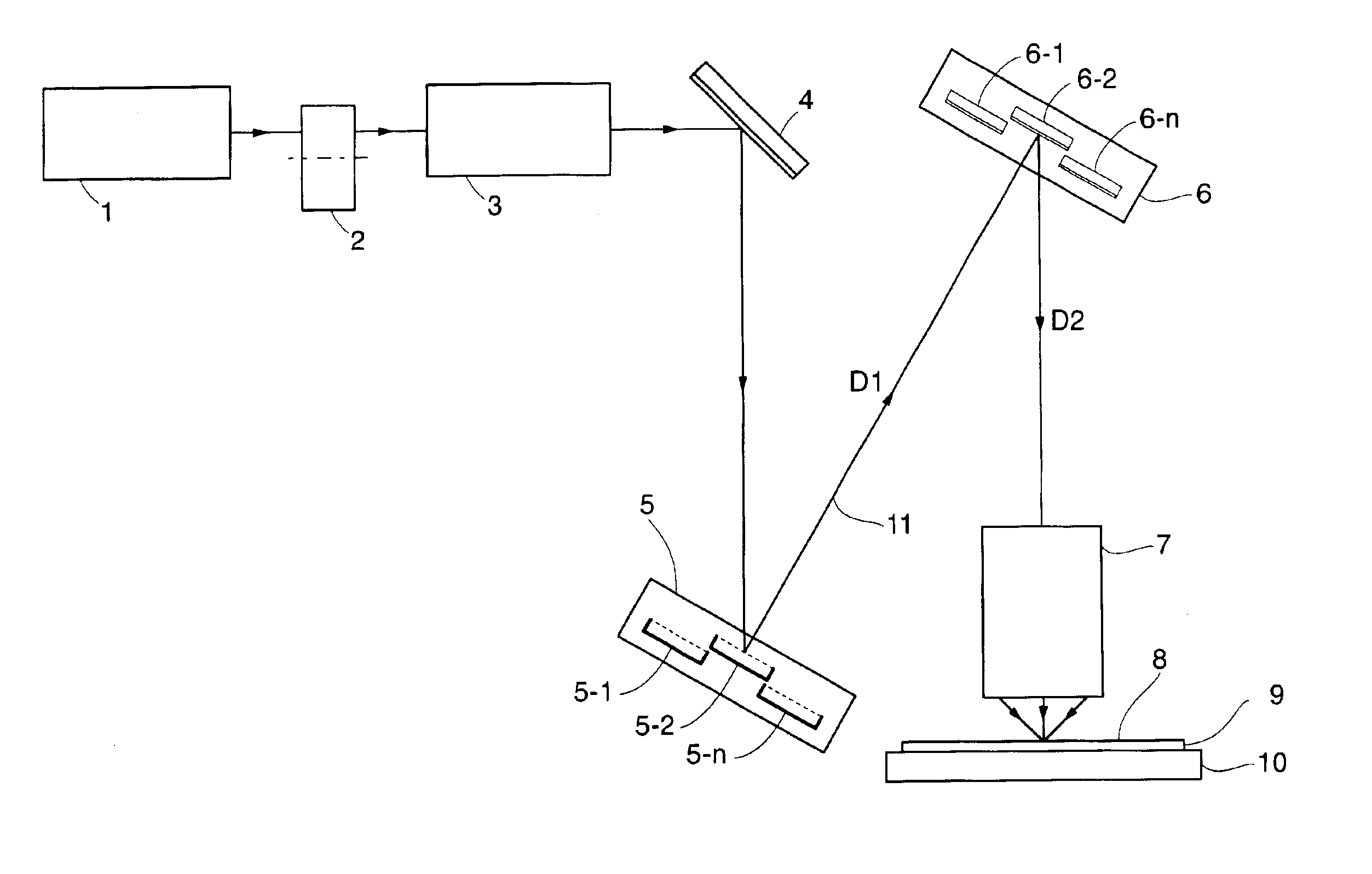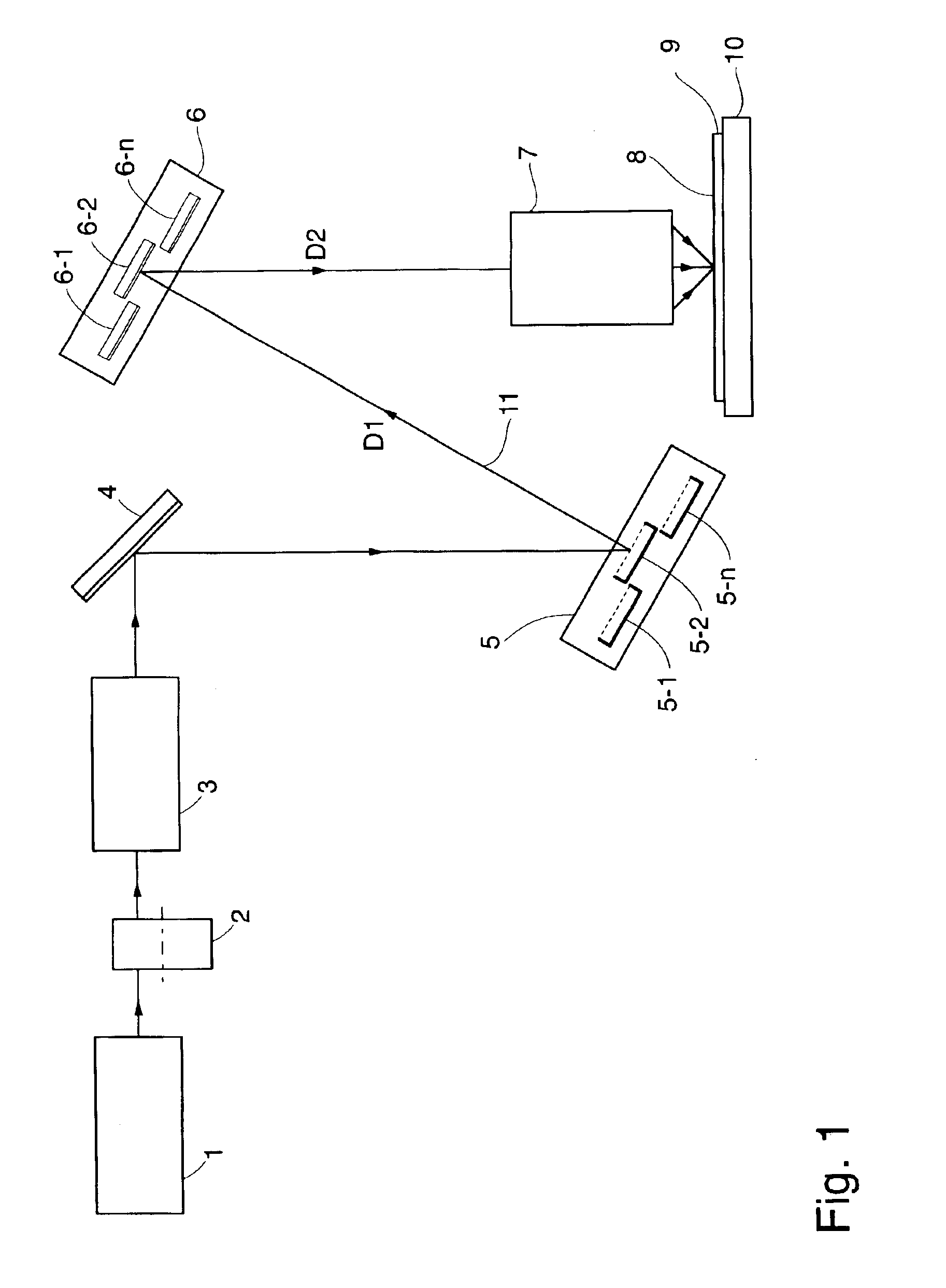Maskless lithography with multiplexed spatial light modulators
a spatial light modulator and maskless lithography technology, applied in the field of optical patterning system, can solve the problems of uneconomical changes by dmd manufacturers, significant area loss, and further damage to the above packing efficiency, and achieve the effect of improving throughpu
- Summary
- Abstract
- Description
- Claims
- Application Information
AI Technical Summary
Benefits of technology
Problems solved by technology
Method used
Image
Examples
Embodiment Construction
The multiplexed-SLM maskless lithography system is shown in FIG. 1. Light source 1, which may preferably be a pulsed excimer laser or a continuous-wave (CW) light source, such as a lamp or a gas laser, chopped by a pulser 2, provides illumination pulses. The pulser 2 may be a mechanical chopper or an optical shutter or an electro-optical modulator. The pulses are required in order to provide illumination synchronization with the pixel data. The pulses also provide blanking during the refresh portion of the cycle, during which various required scanning motions may be provided and during which the micromirror selection may be changed. The next system element is a beam conditioner 3, which preferably is a recycling homogenizer, to efficiently uniformize the full beam area. Steering mirror 4 redirects the full beam to the multiplexed SLM subsystem 5, which preferably is a twin-plane package of slightly-overlapped DMD arrays 5-1, 5-2 . . . 5-n. Each DMD array has some 800,000 micromirror...
PUM
 Login to View More
Login to View More Abstract
Description
Claims
Application Information
 Login to View More
Login to View More - R&D
- Intellectual Property
- Life Sciences
- Materials
- Tech Scout
- Unparalleled Data Quality
- Higher Quality Content
- 60% Fewer Hallucinations
Browse by: Latest US Patents, China's latest patents, Technical Efficacy Thesaurus, Application Domain, Technology Topic, Popular Technical Reports.
© 2025 PatSnap. All rights reserved.Legal|Privacy policy|Modern Slavery Act Transparency Statement|Sitemap|About US| Contact US: help@patsnap.com



